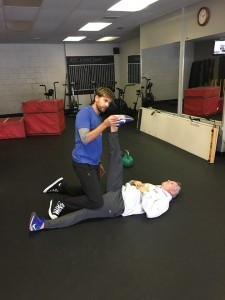Life is all about balance. We can't be all on the one side of one 'thing'. For example I remember darkness being described as the absence of light. Unless we have an appreciation for the concept of light the definition of darkness holds no meaning.In training there are similar balances that exist. We need a certain amount of sympathetic stress (fight or flight) to get things done and keep us alive. And this needs to be paired with times of parasympathetic stress (rest and digest) when we can recover and relax. We need just the right amount of mobility coupled with an appropriate amount of stability to control the movement. Too much of either is not advantageous.We could list many more examples related to our health and the body where optimal health exists in a range between the two. Below are two specific examples you can test yourself to determine how to adapt your training going forward.These two examples can thought of as gaps. Or maybe differentials might be a better term than gaps. I'm using the term gap as this is how one of the examples was explained to me by Dr. John Rusin. He referred to something called the motor control gap and defined this as passive range of motion minus active range of motion. Writing this out as a mathematical equation this becomes: motor control gap = passive ROM - active ROM Passive range of motion refers to the extent a joint can be moved by an external force with no effort by the individual. For example, in the picture below we are assessing the passive range of motion as the leg is being lifted for me into flexion with no effort on my part. [caption id="attachment_5278" align="aligncenter" width="225"] Passive range of motion With active range of motion there...
